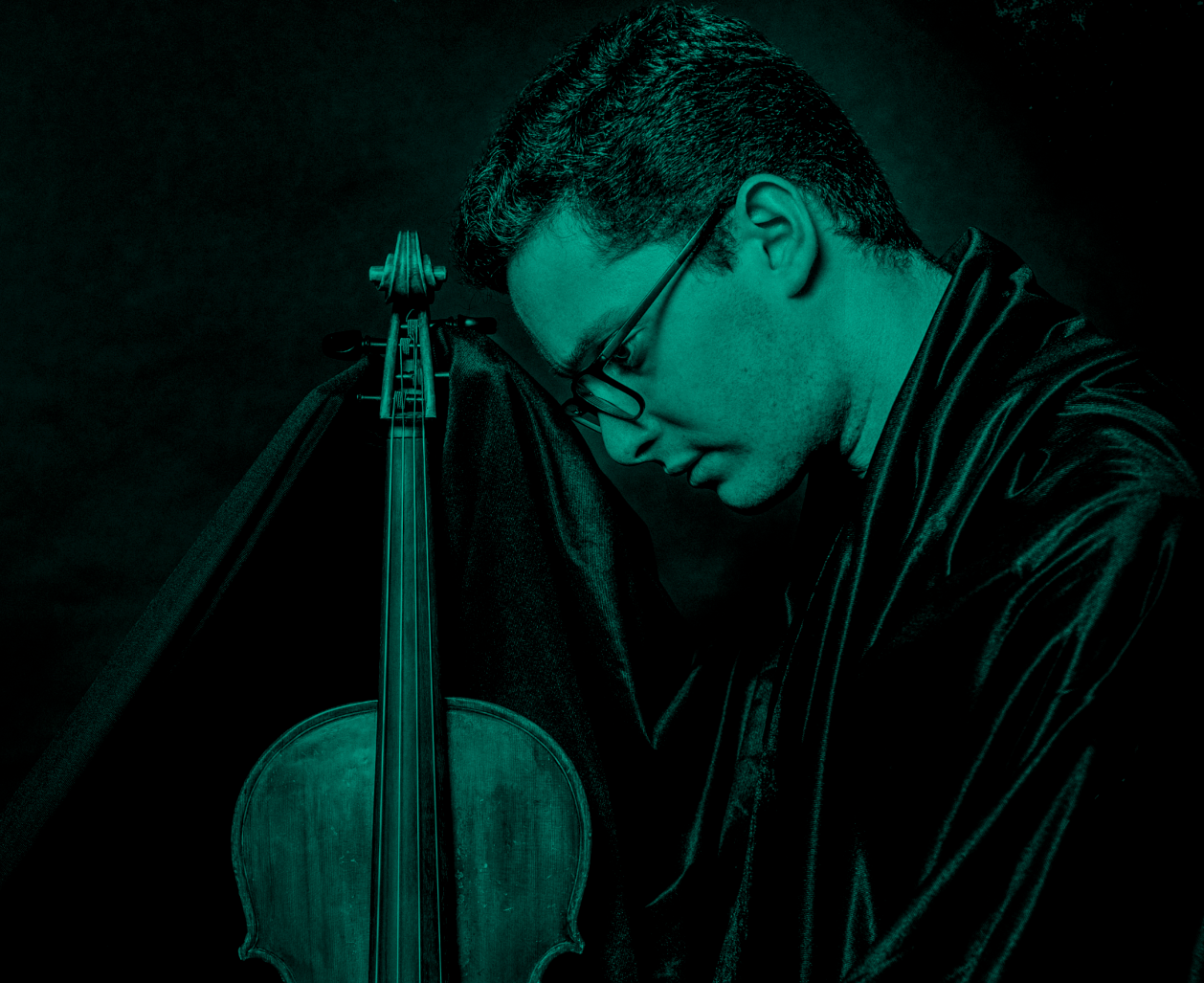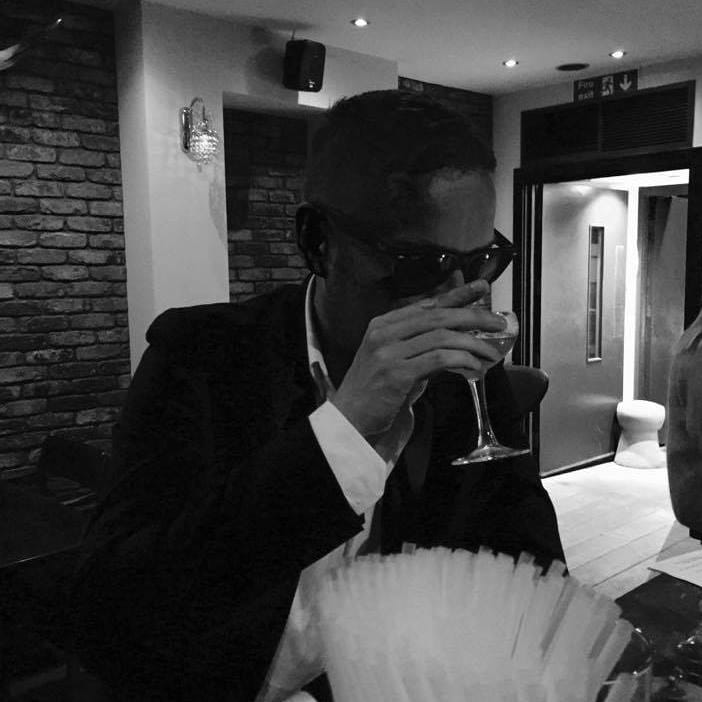Hugo Max is an extraordinarily gifted multi-disciplinary artist - painting, filmmaking, composing and musicianship; expression just pours out of him.
A few years back, TheNeverPress were fortunate enough to catch Hugo performing a wholly improvised live score for our favourite film The Cabinet of Dir Caligari (Weine, 1920). Flash forward to now and we've been so lucky to nab some time with him, before he embarks on a nationwide tour - live-scoring classic silent movies in some of the best-loved cinemas in the UK. Info about the shows will be at the end of the article, but before you go scurrying off to book your tickets, dive into Hugo Max's incredible world, as we talk inspiration, silent movies and keeping it real on the fly to a film you've seen a boat load of times. Enjoy!
Hugo, thank you so much for your time - we know you're incredibly busy prepping your tour...so let's get into it! How did you start creating scores for films, and was there a moment or specific film where you thought “this could be something performative”
I performed my first improvised soundtrack alongside Nosferatu in its centenary year. I hadn’t seen Murnau’s unauthorised Dracula adaptation for over a decade and was amazed at how vividly I could remember the composition of every frame, the way in which each sequence unravels towards the film’s devastating finale. I found the experience of performing a thrilling scenario in which to reevaluate my understanding of film language, stimulated by the tangible craft of early cinema.
I’d previously composed viola soundtracks to my own short films and documented my musical performances in a more cinematic style, challenging the conventions of concert videography. I’m interested in how the physicality of playing the viola, the yearning and percussive possibilities of its sound world, lends itself effectively to dramatic storytelling. Scoring silent cinema became an inevitable process to delve into.
Your live scores are improvised, which is unreal to us. You must’ve seen these films countless times – how do you find new expressions and ways to convey meaning and emotion in the same scene?
I’m always affected by how the ‘ghost’ of a film survives in the imagination after watching, changing with the viewer over time. Scenes transform upon re-discovery which affects my musical reinterpretation. While my viola soundtracks draw on a variety of musical references, I don’t intend to enforce a specific reading of a film with my improvised accompaniment, rather ask questions about its context through this evolving process. In the run-up to a screening I devise original ‘leitmotifs’ associated with the central characters and underlying themes of a film. I seek to employ these differently in every performance which I approach as if the characters on-screen might surprise me and react spontaneously, altering their fate.
Is this a constant creative challenge – does it provide you with a nervous energy, or do you fall into a groove and freely express?
When accompanying expressionist horror, nervous energy can be incredibly important, the dramatic deconstruction of musical motifs over the duration of a film mirroring the breakdown of an on-screen character’s psychological state, but I do carefully plan the opening of my scores to dispel nervousness at the beginning of a performance. The screenings are most rewarding when I feel comfortable with both my instrument and audience, inspired to take musical risks.

Given the endless improvisational outcomes, how do you select a film to score in the first place? Does it need to speak to you in an artistic way, or are there more practical or technical elements that make the film viable?
I began my silent cinema journey accompanying German expressionist works at the same time as exploring my Germanic-Jewish ancestry. Narrative themes in Paul Wegener’s Der Golem (1920) and F. W. Murnau’s Nosferatu (1922) spoke to creative concerns that had spurred my own films and paintings related to my research. My musical engagement with these silent films helped to facilitate a new relationship with my viola in generative dialogue with my visual art practice.
I have since developed approaches to musically interpret a variety of genres, scoring the likes of early Hitchcock and Buster Keaton. While remaining in service of a film, I always look for a personal connection when envisioning a new score, whether through narrative theme or empathy for a particular character’s predicament, which resolves technical questions that arise during this process.
What is your favourite film to perform to?
Robert Wiene’s The Cabinet of Dr. Caligari mystifies and disturbs with every viewing. The film’s allegorical narrative, mourning the soldiers sent to kill and be killed in the First World War, retains its terrifying pertinence.

Lecturing on improvisation may seem an odd title, for the layperson like us – how can one teach improvisation? But it must be quite a technical feat to constantly create and express, and yet not tie yourself in knots and do down dead ends. What is the methodology?
I hope to create a learning space where creatives can share their inspirations and draw on structural ideas from mediums other than music, enabling a new freedom in their work.
I was classically trained as a violinist from the age of four, later picking up the viola to broaden my experience of chamber music-making. Free from the strictures of institutional learning, my relationship with this instrument has always been more exploratory than my engagement with the violin. Incorporating improvisation into my viola practice and performances allowed me to hone my craft free from tensions which I had previously encountered within institutional settings. When teaching improvisation I aim to offer an opportunity where any expressive gesture or sound, whether beautiful or grotesque, can be embellished into a motivic device for thematic development, generating a new openness and comfort with which to approach craft.

As a filmmaker yourself, do you approach your films as image-first, or does the music arrive to inform the writing/creative process?
While I begin with visceral images, music often inspires the connection between them.
My past work has explored musicians in rehearsal, whether in narrative fiction or documentary contexts. The interaction and intersection between the collaborative process of filmmaking and music-making has been one of my greatest thematic and practical influences.
Artist, filmmaker, musician, painter – it all pours out of you. How do you keep track of the ideas? How do you maintain discipline to focus and complete one project?
I always remind myself that it’s not necessarily about the means one has to tell a story, but the story one has to tell. While working on longer, larger projects, I try to keep more immediate means of expression close by: a miniature digital video camera, scrap paper, charcoal. I find it rewarding to work on projects that develop at different speeds, necessitating conversations with a diverse range of creative collaborators day-to-day. It’s also important to preserve time for solitary practice – in the run-up to the tour I have enjoyed directing my creative energy towards the viola. Improvisation has become an essential part of my process across mediums, nurtured through my musical relationship with silent cinema.





Image Copyright: TL; Hugo Max, TM; Sarah Catterall, TR; Bora Rex, BL; Richard Ecclestone, BR; Hugo Max
Finally, the tour - How did you put the programme together – how collaborative has it been with the cinemas you perform at?
It’s been wonderful to build relationships with cinemas across the UK, starting with the Prince Charles Cinema in London’s West End and numerous Picturehouse Cinemas who have been very open to exploring new film suggestions.
While planning my UK tour this year I have been collaborating with several cinemas built in the early 1900s. The tour is as much a celebration of the enduring power of five horror/thriller films from the silent era as the venues where I will be performing, many restored by local communities who have worked tirelessly to keep them alive.
And there you have it! A fascinating insight into the workings of a great artist. We love Hugo's work and urge you all to check out the tour which has just kicked off!



